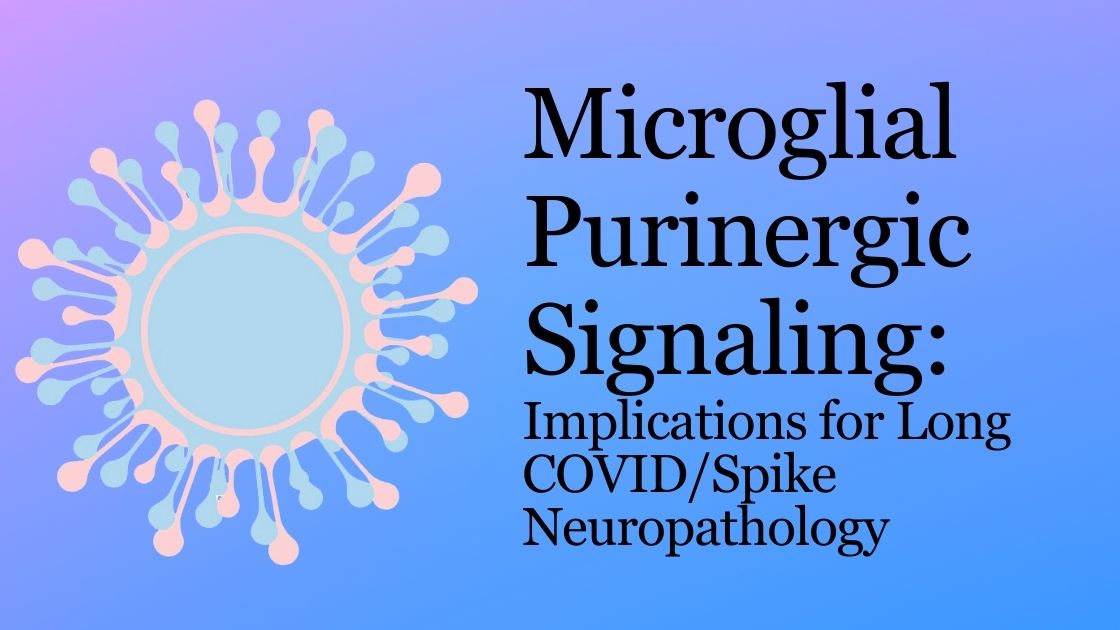Study: SARS-CoV-2 Spike protein alters microglial purinergic signaling
Published: April 2023, Frontiers in Immunology
Summary:
The spike protein can impact brain function even in the absence of viral replication in the brain. Evidence suggests that the virus’s spike protein can activate pattern recognition receptors in the brain and cause neuroinflammation.
Microglia, immune cells in the brain, play a crucial role in COVID-19 neuropathology, and their dysfunction may be a central event in the long-term neurological symptoms of the disease.
The purinergic system is a signaling system that regulates microglial behavior. It involves purinergic receptors and enzymes that respond to nucleotides such as ATP and ADP. The P2X7, P2X4, P2Y4, P2Y6, P2Y12, A2A, and A3 receptors are the primary purinergic receptors expressed by microglial cells. These receptors may act as protective or degenerative mediators, depending on the disease and its progression.
More background on purinergic receptors:[ref]
Purines and purine derivatives include adenosine, ATP, and nucleotide bases. There are two main types of purinergic receptors: P1 receptors, which are activated by adenosine, and P2 receptors, which are activated by nucleotides such as ATP and ADP. The purinergic system plays a role in many physiological processes, including neurotransmission, inflammation, immune response, and vascular regulation. In the brain, the purinergic system is involved in modulating synaptic transmission and plasticity, as well as regulating glial cell function and neuroinflammation
Researchers investigated the impact of SARS-CoV-2 spike protein on microglial purinergic signaling.
They found that exposure to the spike protein induced ATP secretion and upregulated the expression of several purinergic receptors and enzymes in cultured microglial cells.
Spike protein also increased the expression of P2X7, P2Y1, P2Y6, and P2Y12 in microglial cells in hippocampal tissue of infused animals. These findings suggest that SARS-CoV-2 Spike protein can modify the expression of purinergic receptors involved in neuroinflammation, highlighting the relevance of these targets in managing long COVID symptoms.
Keywords: SARS-CoV-2, COVID-19, spike protein, microglia, purinergic signaling, purinergic receptors, neuroinflammation, long COVID.
